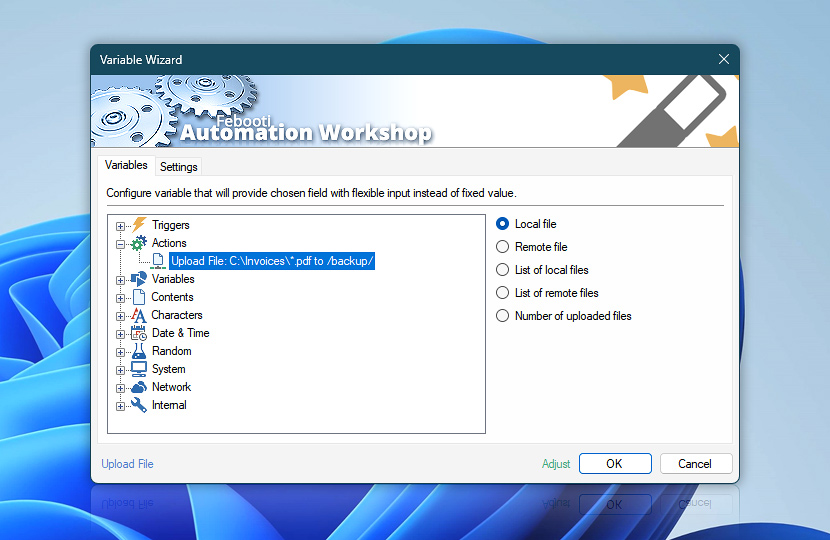The Upload File Action transfers files from a folder on local machine to a directory on a remote server.
After the Upload File Action is completed, the information on its operations is temporarily stored in dynamic variables that can be retrieved by any other Action within the same Task via Variable Wizard. For example, these variables can be saved as text by Write to File Action, emailed to admin by Send Email Action or used as dynamic parameters in other Actions.
| Variable | Details |
|---|---|
| Local file | Returns the full path and filename of the file on the local machine that was the last file uploaded (regardless of whether a single or multiple files were uploaded).
Example:
|
| Remote file | Returns the full path and filename of the uploaded file on the remote server. If multiple files were uploaded at once, it returns the last destination filename.
Example:
|
| List of local files | Returns a complete list of files from the local machine that were uploaded to the remote server. Files are sorted in strictly alphabetical order.
Example:
|
| List of remote files | Returns a list of uploaded remote files on the server. Files are sorted alphabetically.
Example:
|
| Number of uploaded files | Returns the number of uploaded files.
Example:
|
| Completion status | Retrieve Action execution status with a possible value—Successful or Failed. Or Empty, if Action has not been executed yet. |
| Adjust() | Streamline creation of Task workflows even further—instantly make quick variable adjustments such as in-place text replacement (all, first, or last), ensuring (starts, ends, or does not), trimming (whitespaces, quotes, etc.), or changing capitalization. Chain multiple adjustments. Optionally, set a different display name. |

Automatic list processing…
The Upload File variables returned as lists (even multi-level) can be automatically processed in further Actions. Use the For Each Action to parse a given text string (any list variable) and sequentially retrieve its elements one by one · see list processing examples. Or, use the Split Text and Lookup Text Actions to access list elements by their indices.
Just ask…
If you have any questions, please do not hesitate to contact our support team.

